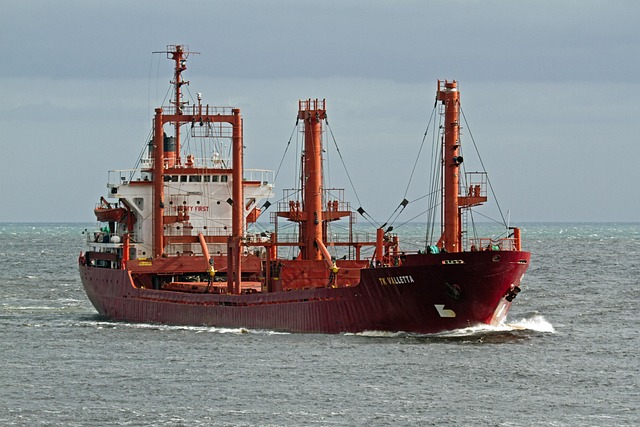Selecting durable materials for marine use
Choosing durable materials for marine use requires understanding how salt, UV, moisture, and mechanical stress interact. This article highlights material choices and design considerations for components such as navigation gear, mooring equipment, lighting, storage, and safety systems to help extend service life and reduce maintenance in marine environments.

Saltwater, sun, and constant motion create a harsh environment for boat components. Selecting durable materials for marine use means balancing corrosion resistance, UV stability, structural strength, and maintainability. This article explains practical choices for hull fittings, electronics housings, anchors, upholstery, bilge components, and insulation, and discusses how design and routine maintenance influence long-term performance under real-world conditions.
Marine environments and materials
Materials behave differently in open-sea, coastal, and sheltered waters. Marine-grade stainless steel (316) offers improved resistance to pitting from salt, while aluminum alloys provide a favorable strength-to-weight ratio but require protective coatings and careful galvanic isolation when paired with other metals. Plastics like UV-stabilized polyethylene and PVC are useful for storage and rigid fittings due to low water uptake. Composites—fiberglass and advanced polymers—are common for structural parts because they resist corrosion and can be engineered for stiffness. Consider local services for testing or inspection in your area to confirm material compatibility with intended use and exposure.
Navigation and electronics materials
Navigation and electronics must be housed in enclosures that resist moisture, salt spray, and UV. Look for IP-rated enclosures (IP67 or higher for submersion protection) and materials such as marine-grade ABS, polycarbonate, or powder-coated aluminum for radar, displays, and sensor housings. Conformal coatings on circuit boards and stainless or plated connectors reduce corrosion risks. Cable glands and seals are critical—the wrong gland material or improper cable routing can permit moisture ingress. Integrating sensors with corrosion-resistant mounts and maintaining proper ventilation or desiccants helps reduce condensation-related failures and extend electronic service life.
Mooring, anchors, and hardware choices
Mooring lines, anchors, and deck hardware face constant mechanical loads and exposure. Synthetic ropes (e.g., high-modulus polyethylene) resist rot and remain lighter than equivalent steel chain, but chafe protection and UV resistance matter. Anchors are commonly stainless steel, galvanized steel, or high-grade alloys; galvanized chain paired with stainless shackles needs insulating materials to prevent galvanic corrosion. For cleats, fairleads, and hinges, choose materials rated for marine use and inspect fastenings and backing plates frequently. Hardware with protective finishes and replaceable sacrificial components helps manage long-term maintenance and reliability.
Lighting, solar, and power components
Marine lighting and solar installations require corrosion-resistant fixtures, tempered or UV-resistant lenses, and sealed cable entries. LED fixtures reduce heat and power draw but still need housings rated for marine exposure. Solar panels intended for marine use typically employ glass fronting and anodized frames with marine-grade sealants. Charge controllers and power electronics should live in ventilated, moisture-protected compartments; use dedicated marine-grade battery terminals and fuses. Regular inspection of seals, wiring, and mounting brackets will help prevent water intrusion and electrical faults while maximizing the operational lifespan of lighting and solar systems.
Upholstery, insulation, and storage solutions
Upholstery in marine settings should use UV- and mildew-resistant fabrics with closed-cell foam for seating to minimize water absorption. Marine vinyl and specialized textiles balance comfort with resistance to abrasion and sun damage; seams and fasteners must be stainless or brass. Insulation for cooled storage and thermal control benefits from closed-cell foam or marine-rated insulation boards that resist moisture. For lockers and storage bins, use corrosion-resistant hinges and drainage paths to avoid standing water. Design storage to allow airflow and drying to reduce mold and odor formation while simplifying maintenance.
Maintenance, bilge, sensors, and safety
Durable materials reduce maintenance but do not eliminate it. Bilge pumps, sensors, and safety equipment should be chosen for marine ratings and installed for easy inspection and replacement. Bilge components benefit from pump strainers and accessible wiring runs to limit clogging and electrical corrosion. Sensors—float, pressure, or tilt—need corrosion-resistant housings and routine functional checks. Safety gear storage should keep equipment dry and accessible. Establish a maintenance schedule that includes cleaning salt deposits, checking sacrificial anodes or protective coatings, and testing electrical enclosures to detect early wear and prevent failures.
Conclusion
Selecting materials for marine use requires balancing corrosion resistance, UV stability, mechanical performance, and ease of maintenance. Thoughtful choices for electronics enclosures, mooring hardware, lighting, upholstery, and insulation reduce long-term issues and enhance safety. Combine appropriate material selection with correct installation practices and scheduled maintenance to achieve reliable service life in marine environments.






